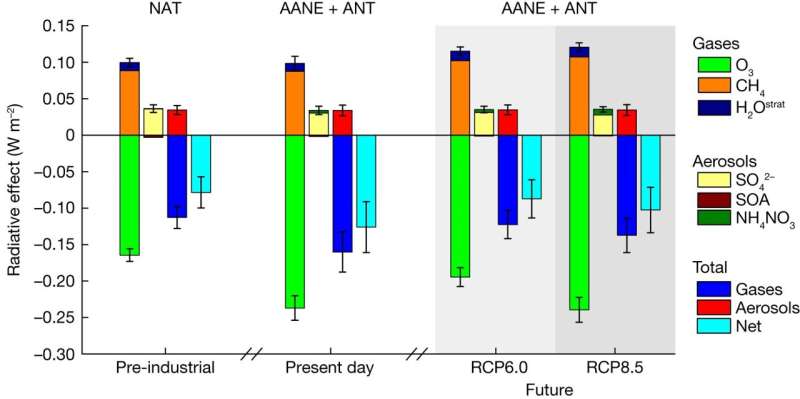July 3, 2023 report
This article has been reviewed according to Science X's editorial process and policies. Editors have highlighted the following attributes while ensuring the content's credibility:
fact-checked
peer-reviewed publication
trusted source
proofread
Assessment of the impact of halogens on the atmosphere suggests they should be included in climate models

An international team of chemists and climate scientists, has conducted an assessment of the impact of short-lived halogens (SLHs) on Earth's atmosphere and are suggesting that their findings indicate that such gases should be included in climate models.
In their paper published in the journal Nature, the team describes how they used an Earth-System Model (ESM) to quantify how SLH compounds influence the global climate. Laura Revell from the University of Canterbury, has published a News & Views piece in the same journal issue outlining the work done by the team on this new effort.
SLHs are a class of gases that have some amount of the halogen elements (iodine, chlorine, and bromine) in them. Prior research has shown that like other gases, they can make their way into the atmosphere. But unlike other gases, which have been widely studied, scientists still do not really understand the impact of SLHs on global warming. This is because they are so short-lived that they are nearly impossible to measure. Such gases can exist for just a few minutes or for up to several months.
Prior research has shown that SLHs can impact air temperatures by reacting with other compounds in the atmosphere. SLH compounds, for example, have been found to react and reduce the levels of ozone in the atmosphere—an interaction that, in theory, should lead to cooling. But SLHs can also exert a warming influence as well, by reacting with compounds that lead to the formation of atmospheric aerosols.
To learn more about the overall impact of SLHs on the atmosphere, and by extension global warming, the researchers used ESMs—simulations used to conduct assessments of the impacts of gases and other compounds on the atmosphere. They were run under multiple scenarios showing past, present and possible future conditions based on changing parameters, such as greenhouse gases, and/or SLHs.
The researchers found that the warming effect of SLHs is more than offset by their cooling effect, which means that on average they cool at least some parts of the atmosphere. But the team notes that such cooling is on a scale much smaller than the warming caused by carbon dioxide. Still, they suggest that to get the most accurate models possible, future climate models should include the impact of halogens.
More information: Alfonso Saiz-Lopez et al, Natural short-lived halogens exert an indirect cooling effect on climate, Nature (2023). DOI: 10.1038/s41586-023-06119-z
Laura Revell, Natural halogen-containing compounds cool the climate, Nature (2023). DOI: 10.1038/d41586-023-02040-7
Journal information: Nature
© 2023 Science X Network





















